The virtual end of the 17 year old ceasefire between Kachin and Myanmar will turn out to be a dilemma for India, particularly in New Delhi’s quest to control the insurgency in the North East. The normalising of ties between India and Myanmar in recent times would, in all probability, require that New Delhi supports the junta’s action, or at least does not oppose it. In fact, certain observers have opined that the events that have unfolded in Bhamo and thereabouts could be a result of Indian pressure on Naypyidaw to act against the military wing of Kachin Independent Organisation (KIO), Kachin Independent Army (KIA). The KIA is reportedly aiding various Indian Insurgent Groups like ULFA and PLA, and recent reports have indicated that new camps belonging to both ULFA and PLA have come up in the area. Indeed, an Indian hand in the Kachin-Myanmar conflict could even be part of a larger Indian strategy to neutralise at least the resurgent anti-talk ULFA billeted in area controlled by the Kachins, even as New Delhi held its first meeting with pro-talk ULFA leaders on 10-11 February 2011. However, the matter is in the realm of speculation at this juncture, and the reason that has been provided for the termination of the ceasefire, which KIO had signed with the Tatmadaw in 1994, is a result of the junta threatening to use force if KIO does not comply with Naypyidaw’s plans to convert KIA into a Myanmar’s army controlled Border Guards unit.
Indeed, the dilemma that India would be faced with is because the present situation poses both a danger and an opportunity. The danger stems from the fact that if India is seen to be supporting punitive action against the Kachins, it would offend the ethnic group (which is estranged in any event), leading them to become even more belligerent in their alliance with the Indian Insurgent Groups, which would then—as they have in the past—support them against the Myanmar army. The North East insurgents would, thereby, continue to have one last island left, and an active conduit to China, which as recent reports suggest have already begun to support groups such as ULFA and PLA.
Also, the ongoing conflict may upset China which does not want conflict in northern Myanmar where more than two million mainland Chinese have settled, and who may now flee to China as a result of the conflict. China perceives the Chinese settlements in the area as their outposts in Myanmar and would not countenance a situation which might result in these having to be abandoned. Indeed, in 2009 when the Myanmarese army attacked the Kokangs, resulting in a deluge of refugees to Yunnan, China firmly told the junta to restore peace. The course of action that China might take could be the same as it took during the Kokang crisis. But, it may also lead it to intervene militarily—in however limited a way—were the junta to continue to act against the ethnic militias. Indeed, during the Kokang crisis there was considerable public opinion inside China to reconsider the country’s foreign policy and act more forcefully, even it meant, as one group asserted that “Chinese compatriots should take up arms against Myanmar and join a “Chinese-Kokang Alliance.” If such an incident were to come to pass, the consequence would be dire for India as the Indian Insurgent Groups, as aforesaid, may actually get closer to China, whose control over the area would become stronger. A response of the sort that is being analysed stems from two primary factors. First, Beijing feels that Naypyidaw is attempting to get closer to forces inimical to China like the United States and India, and may not be amenable to its diktats as in the past. Secondly, there are reports that the United States has promised help to the Kachins by way of considerable amount of money that is to be routed through the Kachin Baptist Church. The Kachins can then utilise the money to purchase weaponry from the Wa run black market and take on the Myanmarese army with greater strength. The American objective is quite simple. They want a Christian Kachinland to be an US satellite post strategically wedged between Myanmar and China, which would be tantamount to considerable forward engineering for the United States. China is worried about the development and would do anything to prevent the Americans from getting a foothold in the area. At any rate, as far as India is concerned the outcome of a “war-like situation” between the Kachins and Naypyidaw is not clear. Kachins may continue to wield considerable influence in the area, leading to a status quo of sorts as far as India and the problem of North East insurgency is concerned.
The opportunity that presents itself to Indian interest is to restore the 1990 relationship it had with the Kachins. India can provide tacit support to the Kachins and clandestinely help them to fight the Myanmarese army. In return, New Delhi must seek a firm commitment that the Kachins will not allow any anti India activity in their territory. With earlier refuge like Bhutan and Bangladesh having been lost, this would destroy the last effective trans-border base of the Indian Insurgent Groups. The defusing of the Kachin corridor is important, because as aforesaid, ULFA and PLA would use it to take cadres to China for training and weapons. Indeed, Indian agencies had with considerable degree of success cultivated the Kachins during 1990s: there is no reason why it cannot do so now. Besides, the Myanmarese army has done nothing until now to aid India by acting against the Indian Insurgent Groups. Therefore, even if India continues to maintain cordial relations with the Tatmadaw, it may find it in the interest of its security calculus to aid the American game in Kachin. It would be in Indian interest to construct an anti-China base in the area that abuts the People’s Republic so closely. The other reward would be that it would have quietly built up a solid ally in the Kachins, whose alliance would ascertain that the North East insurgent groups are denied their last regrouping zone.
----------------------------------------
Published Date : 17 February, 2011


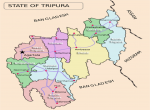
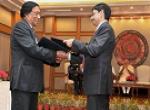
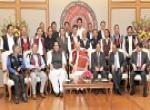
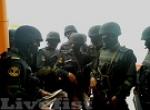
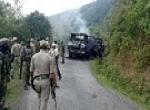

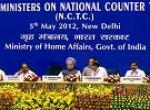
Post new comment